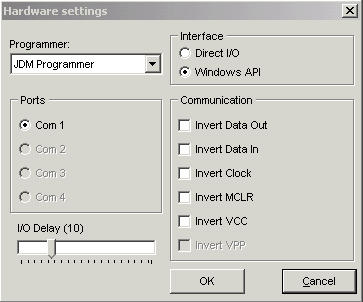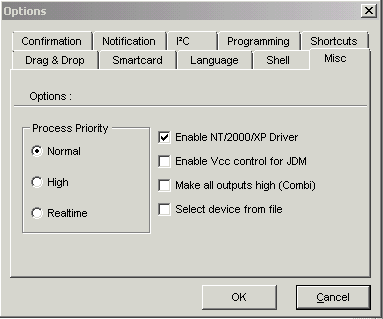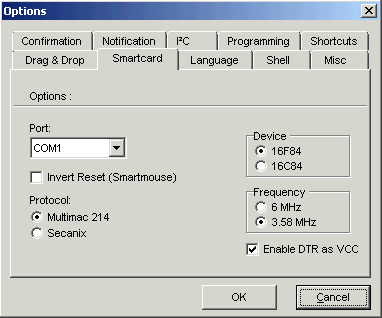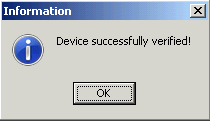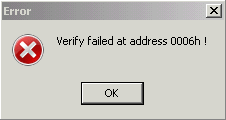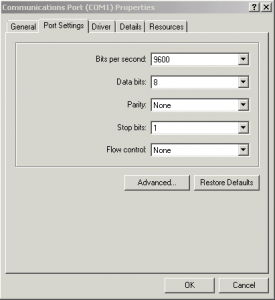Discription :
An electric resistor is a two terminal passive component specifically used to oppose and limit current.A resistor works on the principle of Ohm's law which states that voltage across the terminals of a resistor is proportional to the current flowing through it . V = RI
Where V is the voltage applied across resistor,
I is the current flowing through it ,
and R is the constant called resistance.
The unit of resistance is ohms.
Types of Resistors :
Resistors can be broadly classified based on the following criteria:the type of material used,the power rating and resistance value.
Fixed Resistors:
In some scenarios,an electrical circuit may need a lesser amount of current to flow through it than the input value.Fixed resistors are used in these situations to limit the flow of current.
Carbon Composition Resistors:
These resistors are cylindrical rods which are a mixture of carbon granules and powerdered ceramic.The resistor value depends on the composition of the ceramic material.Ahigher quantity of ceramic content will result in more resistance.Since the rod is coated with an insulated material,there are chances of damage due to excessive heat caused by soldering.
High current and voltage can also damage the resistor.These factors bring irreversible changes in the resistance power of these resistors.This type of resistor is rarely used nowadays due to their high cost and are only preferred in power supply and welding circuits.
Carbon film resistors:
This resistor is formed by depositing a carbon film layer on an insulating substrate.Helical cuts are then made through the carbon film to trace a long and helical resistive path.The resistance can be varied by using diffrent resistivity carbon material and modifiying the shape of the resistor.The helical resistive path make these resistors highly inductive and of little use RF applications.
They exhibit a temperature coefficient between 100 and 900 ppm/C° .The carbon film is protected either by a conformal epoxy coating or a ceramic tube.The operation of these resistors requires high pluse stability.
Metal Film Resistor :
These resistors are made from small rods of ceramic coated with metal (such as a nickel alloy) or metal oxide (such as tin oxide).The value of resistance is controlled mainlly by the thickness of the coating layer (the thicker the layer,the lower is the value of resistance).A fine spiral froove can be cut along the road using a laser to split the carbon or metal coating effectively o,to a long and spiral strip,which forms the resistor.
Metal film resistors can be obtained in a wide range of resistance values from a few Ohms to tens of millions of Ohms with a very small tolerance.For example,for a stated value of 100k Ohm,the actual value will be between 99k and 101k Ohms;Small carbon,metal and oxide resistors come in various colors such as dark red,brown,blue,green,grey or white.
Wire Wound Resistor :
Wire wound resistors vary in size and physical appearance.their resistive elements are commonly lenghts of wire,usually an alloy such as Nickel/Chromiun or Manganin wrapped around a small ceramic or glass fiber rod and coated in an insulating flameproof cement film.They are normalyy available in low values of resistorce but are capable of dissioating large amounts of power.
These resistors can get very hot during use.For this reason,these resistors are housed in a finned metal case that can be bolted to a metal chassis to dissipate the heat generated .Protection from fire is important and fireproof cases or coating are vital.Lead-out wires are normally welded rather than soldered to resistor.Enamel resistors are used in scenarios where high power is involved and are encapsulated in heat proof bases.
Since wire wound resistors are primarilly coils,they have more undesirable inductance than other types of resistor,although winding the wire in sections with alternately reversed directions can minimize inductance.Other techniques employ bifilar winding to reduce cross-section area of the coil For the most demanding circuits,resistors with Ayrton-Perry windings are used.
Thin Film And Thick Film Resistors :
The principal difference between thin film and thick film resistors is how the film is applied to the cylinder (axial resistors) or the surface (SMD resistors) .Thin film resistors are made by sputtering (a method of vacuum desposition )the resistive material onto an insulating substrate whereas thick film are made using dcreen and stencil printing processes.
Ceramic conductors such as tantalum nitride (TaN),ruthenium dioxide (RuO2),lead oxide (PbO) bismuth ruthenate (Bi2Ru2O7),nickel chromium(NiCr),and bismuth iridte (Bi2Ir2O7) are the materials commonly used for making thin film resistors.Thick film resisotrs are usually made by mixing ceramics with powdered glass.Thick films have tolerances ranging from 1 to 2% and a temperature coefficient between +-200 or +-250ppm/k.
Thin film resistors are usually more exepensive than thick film resisotrs.Thin film resistors are preferred for microwave passive and active power componentssuch as microwave power resistors,microwave power terminations,microwave resistive power dividers,microwave power attenuators.
Surface Mount Resistor (SMT) :
This type of resistor helps to achieve very low power dissipation along with very high component density.Most modern circuits use tiny SMT resistors.These are made by depositing a film of resistive material such as tin oxide on a tiny ceramic chip.The rdges of the resistor are then accurately ground or cut with a laser to give precise resistance across the device.Tolerances may be as low as 0.02% contacts at each end are provided, which are soldered directly onto the conductive print on the circuit board,usually by automatic assembly methods.These are mostly used where space is an important factor.
Network Resostors :
These resisotrs are the combination of resistances which may be giving identical value at all pins,with one pin acting as a common terminal.These resistors are available in both single in line package and dual in line package and may be surface mount or through hole.These are used in applications such as pull up/pull down,DAC etc.
Variable Risistors :
Presets and potentiometers are commonly used types of variable resistors.These are mostly used for voltage division and setting the sensitivity of sensors.These have a slinding contact or wiper which can be rotated with the help of screw drivet to change the resistance value.In the linear type,the change in resistance is linear as the wipere rotates.In logarithmic type,the resistance changes exponentially as the wiper slides.The value is meant to be set correctly when installed in some device,and is not adjusted by the device's user.
The variable may have three tabs where the middle tab is the wiper .If all the three tabs are used,it behaves as voltage divider.If only wiper tab is used along with another tab,it becomes a variable resistor or rheostat.If only the side tabs are used,then it behaves as a fixed resistor.These are mostly used for tuning,voltage division and adjusting sensitivity of sensors.
The variable can have one or two switches in-built where the resistor operates for the ON state of the switch(s).Such resistors were mostly used for volume control in older TV and radio circuits.There may also be four-tab variables where the fourth lead is for feedback single and placed near the first tab.Wire wound variable resistors are used for every precise control of resistance.
The wiper may also be rotatry (as in most presets),sliding or disc shaped (as used in pocket radios for volume control).
Semi Variable Resistors :
These are terminal variable resistors designed for handling higher voltages and currents.These are constructed by resistive wire warpped to from a toroid coil with the wiper moving over the upper surface of the toroid,sliding from one turn of the wire to the next.A rheostat is also made from resistance wire wound on a heat-resisting cylinder with the slider made from a number of metal fingers.The fingers can be moved along thecoil of resistance wire by a sliding knob,thus changing the tapping point.
Thermistors :
Thermistors are special resistors whose resistance changes with the temperature.If the resistance increases with increase in the temperature,then it is called posistive temperature coefficient (PTC) or posistors.If the resistance decreases with the increase in temperature,then it is called a negative temperature coefficient (NTC).
An NTC can be replaced by a transistor with a timmer potentiometer.PTC are mostly used as current limiter for circuit protection.As the heat dissipation of resistor increases,the resistance is increased thereby limiting the current.The NTCs are mostly used for temperature sensing,replacement of uses in power supply protection and low temperature measurements of up to 10k.These are constructed using sintered metal oxides ceramic matrix.
Light Dependent Resistors (LDR) :
LDRs have cadmium sulfide zigzag tack whose resistance decreases as the light intensity incident on it increases.In the absence of light,its resistance is in mega ohms but on the application of light,the resistance falls drastically.These resistors are used in many consumer items such as camera light meters,street lights,clock radios,alarms,and outdoor clocks.
Resistance Measurement :
By color codes
Chip resistors have a tree digit numeric representation where the first two digits represent the number and the third digit is ther multiplier.For example,on a chip resistor,the number 103 signifies that its resistance is 10k with 3 being the multiplication factor.
Resistance Measurment By Using Multimeter :
There are a few simple steps required to make a resistance measurement with a digital multimeter:
- Select the resistance that needs to be measured and estimate what the resistance may be .
- Insert the probes into the required sockets.The digital multimeter will have several sockets for the test probes.Insert these or check whether they are already in the correct sockets.
- Turn on the multimeter.
- Select the required range.When the digital multimeter is on,the required quantity that is voltage,current or resistance and its range can be selected.The range selected should be such that the best reading is obtained.Normally,the multimeter function switch will be labeled with the maximum resistance reading.Choose the one where the estimated value of resistance will be under but close to the maximum of the range.In this way,the most accurate resistance measurement can be made.
- Make the measurment.The probes can be applied to both the two terminals of the resistor.The range can be adjusted if necessary.The value of the resistor is shown on the multimeter display.
- Turn off the multimeter :Once the resistance measurement has been made,the multimeter can be turned off to preserve the batteries.It is wise to turn the function switch to high voltage range.In this way,if the multimeter is used again for another type of reading,then no damage will be caused if it is inadvertently used without selecting the correct range and function.
General Precautions When Measuring Resistance :
- Measure resistance when components are not connected in a circuit.
- Remember to ensure that the circuit under test is not powered on.
- Ensure capacitors in circuit under test are discharged.
- Remember thet diodes in circuit will cause different readings in either direction.
- Leakage path through fingers can alter readings in some cases.
Circuit Analysis:
The ACand DC behavior of resistors are the same.In series combination,the equivalent resistance is the sum of the resistances and is given by :
R=R1+R2+R3+....
The current through the branch remains constant while voltage drops across different resistors are different and are given by the product of current and the individual resistances.
In shunt combination,the equivalent resistances is given by :
1/R=1/R1+1/R2+1/R3+.....
The voltage across branches remains constant while currents in different branches are different and are given by supply voltage divided by the individual resistances.
Through analysis,we can conclude that in case of two branch circuits,current in one branch is the product of supply current and the resistance in other branch divided by the sum of resistances.This is called 'shunt formulae'
Ir1=I*R2/(R1+R2)
Ir2=I*R1/(R1+R2)
There can also be star (Y and T) and delta(delta and pie)combination of resistances.
A delta network can be converted into star network by using the formulae:
Ra=Rab*Rac/(Rab+Rac+Rbc)
Rb=Rab*Rbc/(Rab+Rac+Rbc)
Rc=Rac*Rbc/(Rab+Rac+Rbc)
Mnemonics : For delta to star conversion,the resistor at a node is the product of resistances in the adjacent branches connected to that node divided by the sum of all three delta resistances.
A start network can be converted into delta network by using the formulae :
Rab=Ra+Rb+Ra*Rb/Rc
Rac=Ra+Rc+Ra*Rc/Rb
Rbc=Rc+Rb+Rc*Rb/Ra
Mnemonics-For star to delta conversion the resistance at a branch is the sum of the resistances held by the two nodes of the branch with the product of those resistances divided by opposite resistance.
